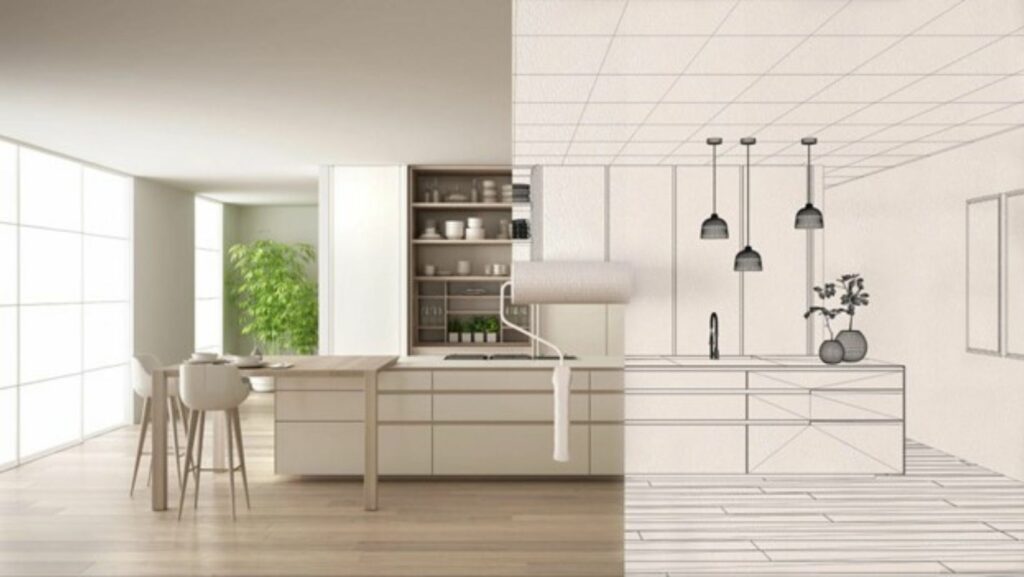
Homeownership isn’t just about having a roof over your head; it’s also a significant investment. By making strategic improvements, homeowners can considerably increase their property’s value while enjoying enhanced comfort and functionality. Home improvements serve as a versatile tool for boosting not just the resale value but also the overall enjoyment of the living space. So, how exactly do these upgrades pay off?
Boosting Your Home’s Resale Value
Strategic Upgrades
When considering home improvements, it’s crucial to focus on those that offer a high return on investment (ROI). Kitchen and bathroom remodeling frequently top the list as they are areas that potential buyers scrutinize closely. However, don’t overlook the importance of curb appeal—updating the exterior can also yield significant returns.
To maximize your ROI, it’s wise to consider the preferences of buyers in your area. For instance, if eco-friendly features are in demand, investing in solar panels or energy-efficient windows could be a smart move. The concept of recouping costs through an increased sale price hinges on making upgrades that resonate with prospective buyers.
Modernization and Functionality
Outdated features and layouts can detract from a property’s value. Home improvements allow homeowners to modernize these aspects, making the home more appealing to buyers. Updated kitchens, with contemporary appliances and open plans, are highly desirable. Bathrooms with sleek, modern fixtures also attract significant attention.
Functional upgrades, such as improved storage solutions or smart home technologies, don’t just appeal to tech-savvy buyers but also enhance the home’s overall value. By updating both the form and function of your home, you increase its attractiveness and marketability.
Curb Appeal and First Impressions
Never underestimate the power of first impressions. The exterior of your home is the first thing potential buyers see, and it’s crucial to make it count. Simple upgrades like fresh paint, a newly paved driveway, or well-maintained landscaping can dramatically enhance a property’s visual appeal.
These improvements not only create a welcoming atmosphere but also contribute to the perceived value of the property. A home that looks well-maintained on the outside will lead buyers to believe it’s equally well-maintained on the inside, often justifying a higher asking price.
Enhancing Your Comfort and Enjoyment
Increased Functionality and Liveability
Home improvements aren’t just about making your property more attractive to future buyers; they’re also about making your living space more enjoyable for you. Addressing specific needs, such as creating additional storage or enhancing kitchen workflow, can significantly improve daily life.

A more functional layout can make everyday tasks easier and more enjoyable. Whether it’s expanding your pantry, adding a kitchen island, or incorporating a mudroom, these changes contribute to a more liveable space.
Personalized Living Space
Your home should reflect your lifestyle and personal tastes. Home improvements can turn a generic space into one that’s uniquely yours. Consider adding a home office if you work remotely or creating a dedicated entertainment room for family movie nights. These changes not only make your home more comfortable but also increase your emotional attachment to the space.
Through personalization, your home becomes more than just a place to live; it becomes a sanctuary tailored to your needs and preferences. This emotional connection can add intangible value to your property.
Energy Efficiency and Cost Savings
One often overlooked aspect of home improvements is energy efficiency. Upgrading to energy-efficient appliances, improving insulation, or installing solar panels can substantially reduce utility bills. These improvements don’t just save money in the short term; they can also increase your home’s value.
Energy-efficient homes are becoming increasingly attractive to buyers who prioritize sustainability. The cost savings generated can contribute to the overall value of the property, making it a win-win situation.
Financial Considerations for Home Improvements
Setting a Realistic Budget
Planning and budgeting are crucial for any home improvement project. Creating a realistic budget helps ensure that you don’t overspend and can complete the project without financial strain. Assess the costs and explore various financing options such as personal loans, home equity loans, or paying from savings.
Staying within budget is essential to maximize the ROI. Overspending can offset any potential gains, making it critical to plan thoroughly.
Maximizing Return on Investment (ROI)
The importance of property valuation in renovations cannot be overstated. To maximize ROI, prioritize projects with high recoup rates. Conduct research to determine which improvements are most likely to pay off in your area. Focus on cost-effective upgrades that meet current buyer demand.
Selecting the right projects requires a balance between cost and potential return. Informed decisions are crucial in ensuring that the improvements ultimately add value to your property.
Long-Term Value vs. Short-Term Gains
It’s vital to differentiate between improvements meant for resale and those for personal enjoyment. While some upgrades may not offer immediate financial returns, they can enhance your long-term living experience. Long-term improvements like energy-efficient windows or a new roof provide ongoing benefits, even if they don’t immediately boost resale value.
By considering both current and future needs, homeowners can make informed choices that offer financial benefits over time. This balanced approach makes it possible to enjoy the fruits of your improvements while knowing they’ve added lasting value.
Getting Started with Home Improvements
Identifying Your Needs and Goals
Before diving into any improvement project, it’s essential to clearly define your goals. Are you looking to increase resale value, or are you more focused on personal comfort? Identifying these objectives can help prioritize the projects that best meet your needs.
Having clearly defined goals ensures that you make decisions that are aligned with both financial gain and personal satisfaction.
Research and Planning
Proper research and planning make all the difference in a successful home improvement project. Investigate the costs of materials, evaluate different options, and understand local regulations that may affect your plans. Obtaining quotes from qualified contractors can provide valuable insights and help you lock in a realistic budget.

Creating a detailed project plan can ensure that the improvements proceed smoothly, avoiding costly mistakes and delays.
DIY vs. Professional Help
Deciding between DIY and hiring professionals is a crucial consideration. While DIY projects can save money, they may not always be the best option—especially for complex tasks requiring specific skills. Professional contractors can bring expertise, ensuring that the job is done correctly and safely.
Weighing the pros and cons of DIY versus professional help can guide you in making the best decision for your situation. It’s essential to consider both your skill level and the complexity of the project.
Conclusion
In summary, the benefits of investing in home improvements are manifold. They can significantly boost your property’s resale value, enhance your living experience, and provide long-term financial gains. However, careful planning and budgeting are key to ensuring that these projects maximize both financial and personal rewards.
Exploring home improvement projects offers a myriad of possibilities. Whether you’re aiming to sell or simply wish to create a more comfortable living space, the value of home improvements is undeniable.












